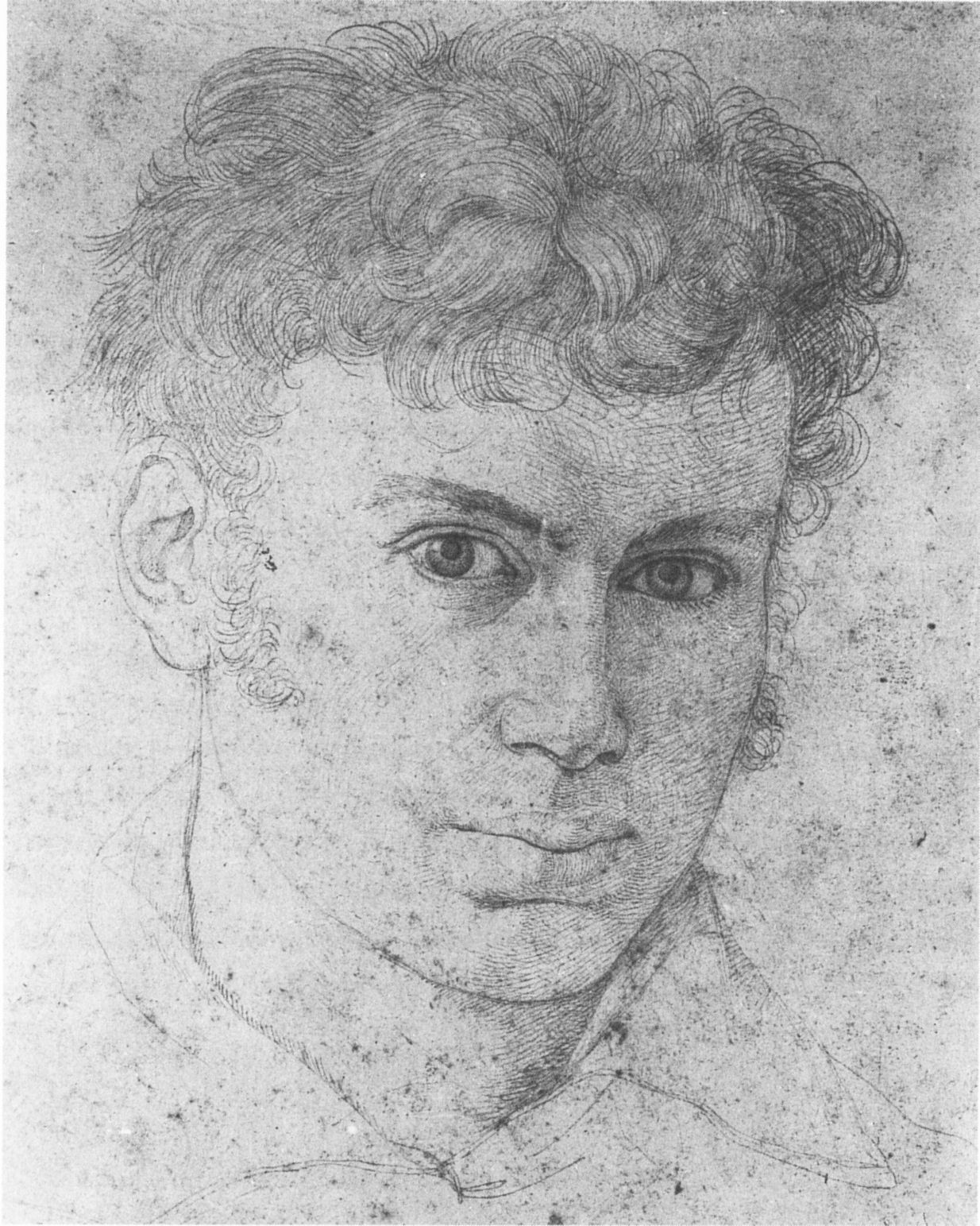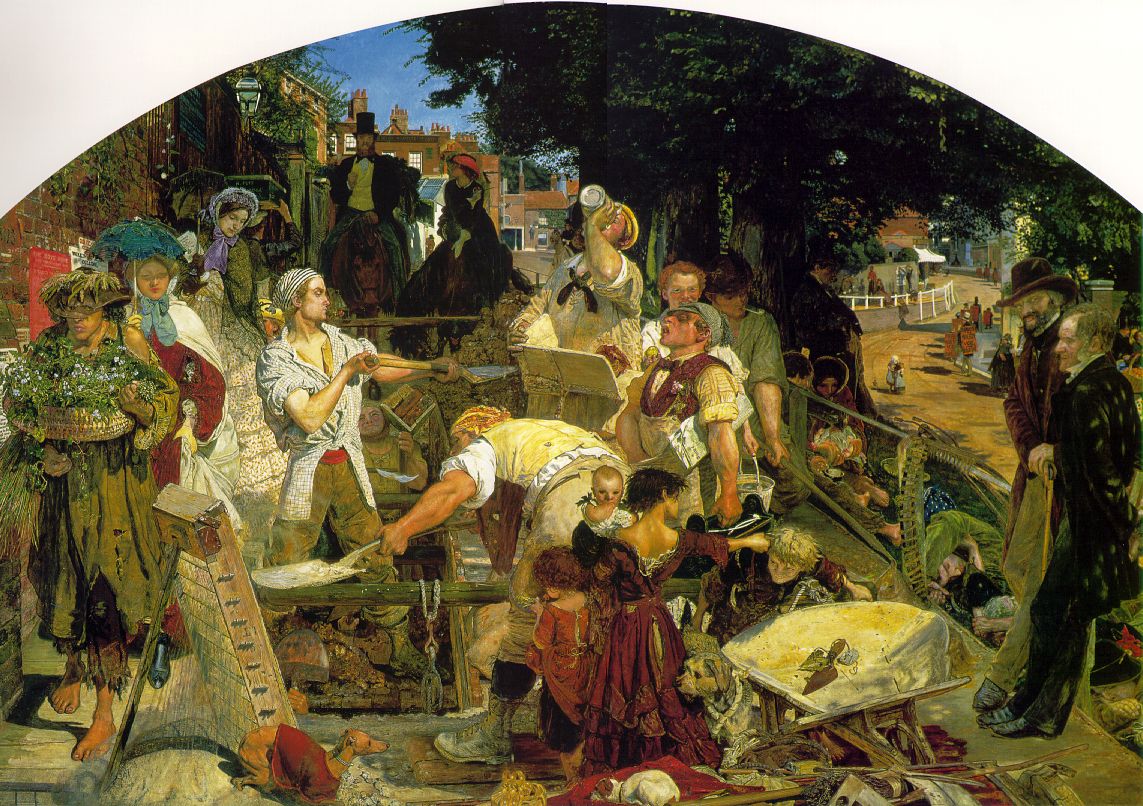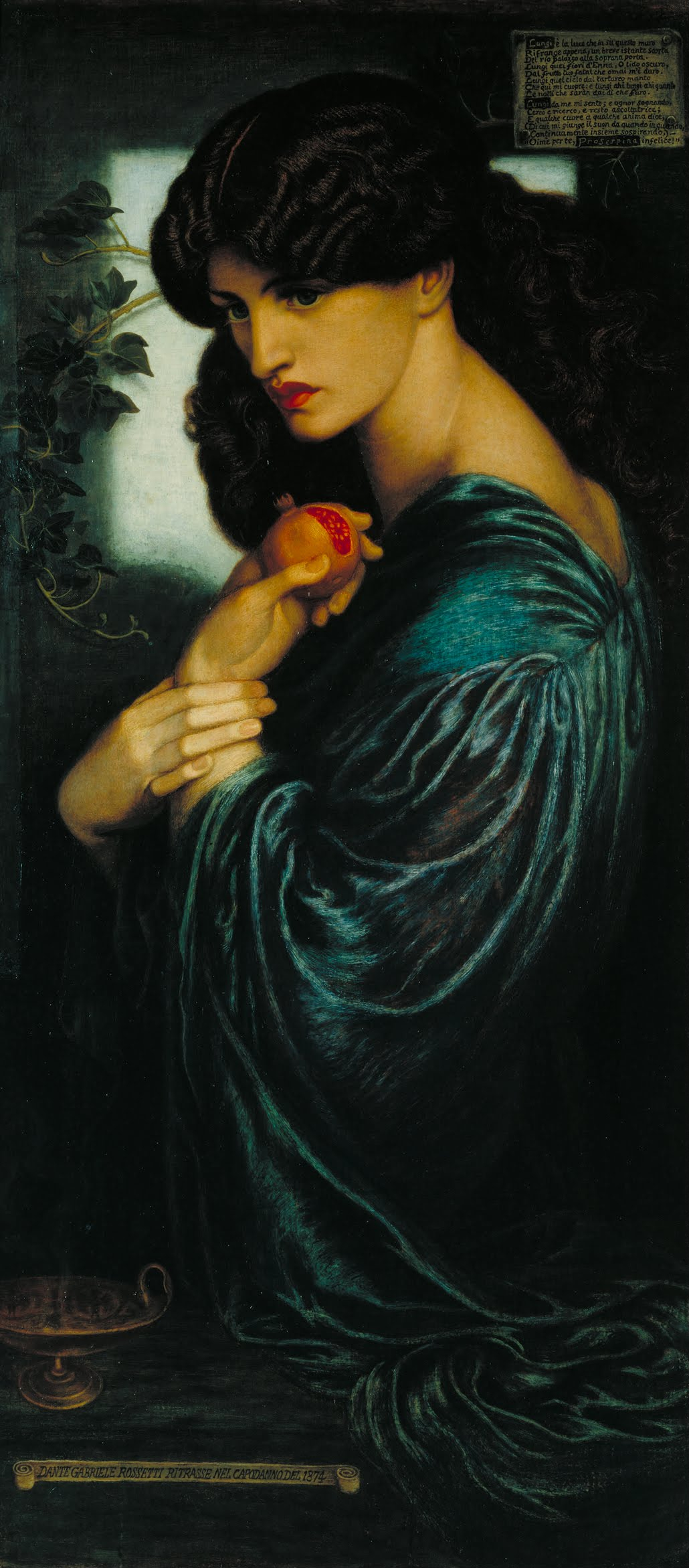|
Nazarene Movement
The epithet Nazarene was adopted by a group of early 19th-century German Romantic painters who aimed to revive spirituality in art. The name Nazarene came from a term of derision used against them for their affectation of a biblical manner of clothing and hair style. History In 1809, six students at the Vienna Academy formed an artistic cooperative in Vienna called the Brotherhood of St. Luke or ''Lukasbund'', following a common name for medieval guilds of painters. In 1810 four of them, Johann Friedrich Overbeck, Franz Pforr, Ludwig Vogel and Johann Konrad Hottinger (1788–1827) moved to Rome, where they occupied the abandoned monastery of San Isidoro. They were joined by Philipp Veit, Peter von Cornelius, Julius Schnorr von Carolsfeld, Friedrich Wilhelm Schadow and a loose grouping of other German-speaking artists. They met up with Austrian romantic landscape artist Joseph Anton Koch (1768–1839) who became an unofficial tutor to the group. In 1827, they were jo ... [...More Info...] [...Related Items...] OR: [Wikipedia] [Google] [Baidu] |
Joseph Von Führich
Joseph von Führich (fully Josef Ritter von Führich) (9 February 1800 – 13 March 1876) was an Austrian painter, one of the Nazarene movement, Nazarenes. He painted religious pictures almost exclusively. Führich acquired his greatest fame as a draughtsman. Biography He was born at Kratzau (today Chrastava) in Bohemia. Deeply impressed as a boy by rustic pictures adorning the wayside chapels of his native country, his first attempt at composition was a sketch of the Nativity of Jesus in art, Nativity for the festival of Christmas in his father's house. He lived to see the day when, becoming celebrated as a composer of scriptural episodes, his sacred subjects were transferred in numberless repetitions to the roadside churches of the Austrian state, where peasants thus learnt to admire modern art reviving the models of earlier ages. He learned the elements of art in his father's workshop where he practised drawing. [...More Info...] [...Related Items...] OR: [Wikipedia] [Google] [Baidu] |
Johannes Veit
Johannes Veit, originally Jonas Veit (2 March 1790, Berlin - 18 January 1854, Rome) was a German history painter. After 1811, he lived and worked in Rome, where he was a member of the Nazarene movement. "Johannes Veit" from ''Bénézit'', @ Oxford Art Online Life and work He was born to the banker, Simon Veit, and his wife Dorothea von Schlegel, Brendel; daughter of the philosopher, Moses Mendelssohn. After his parents divorced, in 1799, he stayed in Berlin with his father. In 1805, he went to Hamburg and began an apprenticeship at Mendelssohn & Co., a private banking firm owned by his uncles, Joseph Mendelssohn, Joseph and Abraham Mendelssohn Bartholdy, Abraham Mendelssohn. Three years later, inspired by his brother Philipp Veit, Philipp, he ...[...More Info...] [...Related Items...] OR: [Wikipedia] [Google] [Baidu] |
Eduard Jakob Von Steinle
Eduard von Steinle (2 July 1810 – 19 September 1886) was a painter and a printmaker. He was born in 1810 in Vienna, Austria and died in 1886 in Frankfurt, Germany. He spent 1828-33 in Rome with similar artists from the Nazarene school before returning to Vienna in 1833. Frederic Leighton studied under him. Steinlestrasse in Frankfurt-am-Main Frankfurt am Main () is the most populous city in the States of Germany, German state of Hesse. Its 773,068 inhabitants as of 2022 make it the List of cities in Germany by population, fifth-most populous city in Germany. Located in the forela ... is named after him. References External links * Eduard von Steinle The Met {{DEFAULTSORT:Steinle, E 1810 births 1886 deaths Austrian romantic painters Nazarene painters 19th-century Austrian painters 19th-century German male artists ... [...More Info...] [...Related Items...] OR: [Wikipedia] [Google] [Baidu] |
Ford Madox Brown
Ford Madox Brown (16 April 1821 – 6 October 1893) was a British painter of moral and historical subjects, notable for his distinctively graphic and often William Hogarth, Hogarthian version of the Pre-Raphaelite style. Arguably, his most notable painting was ''Work (painting), Work'' (1852–1865). Brown spent the latter years of his life painting the twelve works known as ''The Manchester Murals'', depicting History of Manchester, Mancunian history, for Manchester Town Hall. Early life Brown was the grandson of the medical theorist John Brown (physician, born 1735), John Brown, founder of the Brunonian system of medicine. His great-grandfather was a Scottish labourer. His father Ford Brown served as a purser in the Royal Navy, including a period serving under Sir Isaac Coffin, 1st Baronet, Sir Isaac Coffin and a period on HMS Arethusa (1781), HMS ''Arethusa''. He left the Navy after the end of the Napoleonic Wars. In 1818, Ford Brown married Caroline Madox, of an old ... [...More Info...] [...Related Items...] OR: [Wikipedia] [Google] [Baidu] |
Frederick Leighton
Frederic Leighton, 1st Baron Leighton, (3 December 1830 – 25 January 1896), known as Sir Frederic Leighton between 1878 and 1896, was a British Victorian painter, draughtsman, and sculptor. His works depicted historical, biblical, and classical subject matter in an academic style. His paintings were enormously popular and expensive, during his lifetime, but fell out of critical favour for many decades in the early 20th century. Leighton was the bearer of the shortest-lived peerage in history; after only one day, his hereditary peerage became extinct upon his death. Biography Leighton was born in Scarborough to Augusta Susan and Dr. Frederic Septimus Leighton (1799–1892), a medical doctor. Leighton's grandfather, Sir James Boniface Leighton (1769–1843), had been the primary physician to two Russian tsarsAlexander I and Nicholas Iand their families, and amassed a fortune while in their service. Leighton's career was always cushioned by this family wealth, with his f ... [...More Info...] [...Related Items...] OR: [Wikipedia] [Google] [Baidu] |
William Dyce
William Dyce (; 19 September 1806 in Aberdeen14 February 1864) was a Scottish painter, who played a part in the formation of public art education in the United Kingdom of Great Britain and Ireland, United Kingdom, and the South Kensington Schools system. Dyce was associated with the Pre-Raphaelite Brotherhood and played a part in their early popularity. Life Dyce was born on 19 September 1806 at 48 Marischal Street in Aberdeen, the son of William Dyce of Fonthill and Cuttlehill FRSE and Margaret Chalmers of Westburn. His uncle was General Alexander Dyce FRSE. His older brother was Robert Dyce FRSE. After studying at Marischal College, Dyce early showed an aptitude for design and began his artistic career at the Royal Academy schools in Edinburgh and London. He travelled to Rome for the first time in 1825, and while there he studied the works of Titian and Poussin. He returned to Aberdeen after nine months, and painted several pictures, including ''Bacchus nursed by the Nymp ... [...More Info...] [...Related Items...] OR: [Wikipedia] [Google] [Baidu] |
Henri Dorra
Henri Dorra (January 17, 1924 – June 14, 2002) was an Egyptian-born American art historian and educator. A specialist on Symbolism in French art, Dorra was Professor Emeritus of Art History at the University of California, Santa Barbara. Career Dorra was born in Alexandria, Egypt to Clement Dorra and Aimee Castro. In 1944, Dorra graduated from the University of London with a Bachelor of Science in Engineering. He then moved to the United States in 1947 to attend Harvard University, where he received the Bowdoin Prizes two years later. There, Dorra earned his Master of Arts in Engineering in 1950 and his Doctor of Philosophy in Art History in 1954. His doctoral dissertation was on the noted artist Paul Gauguin. Upon graduation, Dorra began his curatorial career as Assistant Director of the Corcoran Gallery of Art in 1954. Seven years later, he was hired in the same role by the Philadelphia Museum of Art, where he remained for one year under Henri Gabriel Marceau. In 1962 ... [...More Info...] [...Related Items...] OR: [Wikipedia] [Google] [Baidu] |
Pre-Raphaelite Brotherhood
The Pre-Raphaelite Brotherhood (PRB), later known as the Pre-Raphaelites, was a group of English painters, poets, and art critics, founded in 1848 by William Holman Hunt, John Everett Millais, Dante Gabriel Rossetti, William Michael Rossetti, James Collinson, Frederic George Stephens and Thomas Woolner who formed a seven-member "Brotherhood" partly modelled on the Nazarene movement. The Brotherhood was only ever a loose association and their principles were shared by other artists of the time, including Ford Madox Brown, Arthur Hughes and Marie Spartali Stillman. Later followers of the principles of the Brotherhood included Edward Burne-Jones, William Morris and John William Waterhouse. The group sought a return to the abundant detail, intense colours and complex compositions of Quattrocento Italian art. They rejected what they regarded as the mechanistic approach first adopted by Mannerist artists who succeeded Raphael and Michelangelo. The Brotherhood believed the ... [...More Info...] [...Related Items...] OR: [Wikipedia] [Google] [Baidu] |
Beuron Art School
The Beuron school was an art movement founded by a confederation of Benedictine monks in Germany in the late 19th century.''The Revival of Medieval Illumination: Nineteenth-Century Belgium Manuscripts and Illuminations from a European Perspective'' by Thomas Coomans and Jan De Maeyer 2007 page 144 Notables In addition to the first abbot of Beuron Archabbey, Maurus Wolter (died 1890), who founded the monastery with his brother Placidus in 1863, the early leaders of the artistic school were Father Desiderius Lenz (1832–1928) and Gabriel Wuger (1829–1892). Several Benedictine artists worked within the school, including Jan Verkade. Principles Beuronese art is principally known for its murals with "muted, tranquil and seemingly mysterious colouring". Though several different principles were in competition to form the canon for the school, " e most significant principle or canon of the Beuronese school is the role which geometry played in determining proportions." Lenz elabo ... [...More Info...] [...Related Items...] OR: [Wikipedia] [Google] [Baidu] |
Palazzo Zuccari, Rome
Palazzo Zuccari, also called Palazzetto Zuccheri, is a 16th-century palace, located at the crossroads of via Sistina and via Gregoriana, with a Mannerist 16th-century facades on the latter street and a late Baroque facade on the piazza Trinità dei Monti in the Campo Marzio neighborhood of Rome, Italy. Designed by Federico Zuccari, the house is known locally as the "House of Monsters" for the decorations on its doors and windows overlooking the via Gregoriana. History The artist Federico Zuccari worked in Rome and Florence (where he designed frescoes for the Florence Cathedral and made a name for himself as an artist. Called back to Urbe for a series of commissions, he decided to create a sumptuous palace that displayed his importance and skill. The project would be more grandiose than his previous work in Florence, the Palazzo Zuccari. In 1590, Zuccari bought a plot of land near the Trinità dei Monti, and its remains of the Gardens of Lucullus. He then began to construct his ... [...More Info...] [...Related Items...] OR: [Wikipedia] [Google] [Baidu] |
Fresco
Fresco ( or frescoes) is a technique of mural painting executed upon freshly laid ("wet") lime plaster. Water is used as the vehicle for the dry-powder pigment to merge with the plaster, and with the setting of the plaster, the painting becomes an integral part of the wall. The word ''fresco'' () is derived from the Italian adjective ''fresco'' meaning "fresh", and may thus be contrasted with fresco-secco or secco mural painting techniques, which are applied to dried plaster, to supplement painting in fresco. The fresco technique has been employed since antiquity and is closely associated with Italian Renaissance painting. The word ''fresco'' is commonly and inaccurately used in English to refer to any wall painting regardless of the plaster technology or binding medium. This, in part, contributes to a misconception that the most geographically and temporally common wall painting technology was the painting into wet lime plaster. Even in apparently '' buon fresco'' technology ... [...More Info...] [...Related Items...] OR: [Wikipedia] [Google] [Baidu] |







